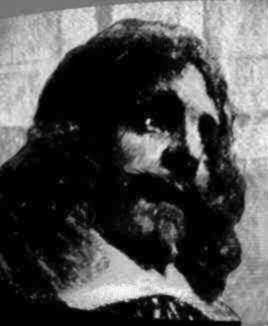<Back to Index>
- Mathematician Girard Desargues, 1591
- Poet and Dramatist José Zorrilla y Moral, 1817
- Admiral of the Fleet of the Royal Navy Edward Hawke, 1705
PAGE SPONSOR

Girard Desargues (February 21 1591, and baptized March 2, 1591 – October 1661) was a French mathematician and engineer, who is considered one of the founders of projective geometry. Desargues' theorem, the Desargues graph, and the crater Desargues on the Moon are named in his honour.
Born in Lyon, Desargues came from a family devoted to service to the French crown. His father was a royal notary, an investigating commissioner of the Seneschal's court in Lyon (1574), the collector of the tithes on ecclesiastical revenues for the city of Lyon (1583) and for the diocese of Lyon.
Girard Desargues worked as an architect from 1645. Prior to that, he had worked as a tutor and may have served as an engineer and technical consultant in the entourage of Richelieu.
As an architect, Desargues planned several private and public buildings in Paris and Lyon. As an engineer, he designed a system for raising water that he installed near Paris. It was based on the use of the at the time unrecognized principle of the epicycloidal wheel.
His work was rediscovered and republished in 1864. His works were subsequently collected in L'oeuvre mathématique de Desargues (ed. by René Taton; Paris, 1951). The 1864 version of his work is shortly to be republished (2011) by Cambridge University Press as part of the Cambridge Library Collection.
Late in his life, Desargues published a paper with the cryptic title of DALG. The most common theory about what this stands for is Des Argues, Lyonnais, Géometre, proposed by Henri Brocard.